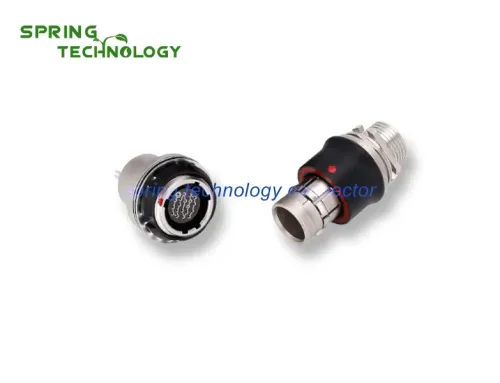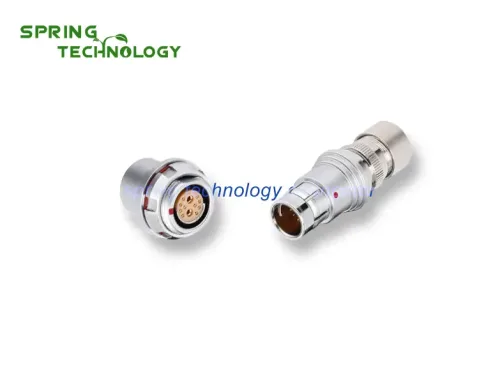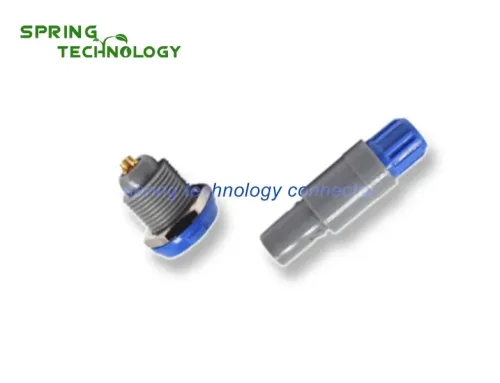GPS receiver is the user equipment of GPS navigation satellite, and it is the terminal instrument to realize GPS satellite navigation and positioning. It is a radio receiving device capable of receiving, tracking, converting and measuring GPS satellite navigation and positioning signals. It has the common characteristics of ordinary radio receiving equipment and has the characteristics of capturing, tracking and processing weak satellite signals. GPS system is a global navigation positioning system with timing and ranging functions. The GPS receiver is one of the three components of a GPS system. (The other two are GPS air satellite and ground control respectively.) [
GPS receiver is mainly composed of GPS receiver antenna unit, GPS receiver host unit and power supply. The antenna unit consists of a receiving antenna and a preamplifier. Its basic function is to receive GPS satellite signals and convert the energy of the satellite signals into the corresponding amount of current. After the preamplifier, the weak GPS signal current is amplified and sent. The frequency converter that the receiver can enter and perform frequency conversion can track and measure the signal. The main function of the receiver unit is to track, process and measure the signal power after amplification and variable frequency processing. It is mainly composed of a signal channel unit, a storage unit, a calculation and display control unit, and a power supply.
With the rapid development of GPS navigation and positioning technology and the continuous development of application fields, the types of GPS receivers have gradually increased. According to different classification standards, GPS receivers can be classified as follows:
1. Classification according to the purpose of the GPS receiver.
According to the purpose of the receiver, it can be divided into navigation type, measurement type and time service type receiver.
The first category is navigation receivers. It is mainly used to determine the real-time position and speed of vehicles such as ships, vehicles, aircraft and missiles to ensure that these vehicles are sailing on predetermined routes. The structure of this receiver is relatively simple, the accuracy is low, the price is cheap, and its application is extremely extensive.
The second type, measurement receiver, is mainly a receiver suitable for various measurement tasks. Compared with navigation receivers, measurement receivers have higher accuracy, more complex structures, and are more expensive.
The third category is timing receivers. The structure is simple, and it is mainly used for time-frequency synchronization measurement at the observatory or ground monitoring station.
2. Press the satellite signal number classification received by the receiver
According to the frequency of the satellite signal received by the receiver, it can be divided into code phase receiver, single frequency receiver (L1), dual frequency receiver (L1, L2) and beacon receiver.
The first type is a code phase receiver. C / A code and P code are used as ranging signals. Although the parameters provided by the navigation message can be used to correct the effect of ionospheric refraction on the observation measurement, the code phase receiver is mainly used for navigation and handheld low-precision reception due to the poor ranging accuracy of the C / A code and P code. Device.
The second type is a single frequency receiver. Capable of receiving modulated L1 carrier signals. At this time, although the parameters provided by the navigation message can be used to modify the ionospheric refraction effect of the observed values, the accuracy of the model is not ideal due to the incomplete correction model. Therefore, the single frequency receiver is mainly used for precise positioning and navigation with a short baseline (less than 20 kilometers).
The third category is dual-frequency receivers. Can receive L1 carrier and L2 carrier signals at the same time. The use of dual-frequency technology can eliminate or greatly weaken the ionosphere.
The fourth category is the beacon receiver. Capable of receiving GPS satellite ranging code signals and radio beacon differential global positioning system signals simultaneously. Within three hundred square kilometers, real-time positioning results of 1 to 3 meters can be obtained. Beacon receivers are mainly used for navigation and positioning of ships in areas covered by radio beacons in coastal areas.
3. Sort by the number of channels of the receiver.
According to the type of receiver signal channel, it can be divided into multi-channel receiver, sequential channel receiver and multi-channel receiver. GPS receivers need to track multiple satellites during navigation and positioning. For signals from different satellites, they must first be processed and measured separately to obtain observations on the signals from different satellites. The main role of the GPS receiver channel is to separate the received different satellite signals to achieve the tracking, processing and measurement of each satellite signal.
The first type is a multi-channel receiver, that is, a receiver having multiple satellite signal channels, and each channel continuously tracks only one satellite signal. Therefore, this type of receiver is also called a continuous tracking type receiver, and usually has 4-12 channels.
The second type, sequential channel receiver, usually has only 1-2 channels. Tracking multiple satellite signals Under the control of corresponding software, it can track and measure each satellite signal in turn according to time sequence. Because it takes a long time to sequentially measure satellites in a cycle, the tracking of satellite signals is discontinuous.
The third type, multiplexed channel receiver, usually has only 1-2 channels. Under the control of the corresponding software, the signals of all observation satellites are measured in turn. The difference between this receiver and the sequential channel receiver is that the cycle time for measuring the satellite signal under test is short (≤20ms), and it can keep the satellite signal continuously tracked.
4. Classified by receiving satellite system
The first category is the single star system. Usually only one satellite signal receiver of a satellite navigation positioning system can be tracked. At present, there are mainly GPS receivers, GLONASS receivers, Beidou receivers, etc.
The second category is the double star system. Satellite signal receiver capable of tracking two satellite navigation and positioning systems simultaneously. At present, there are mainly GPS \ GLONASS integrated receivers.
5. Classified according to the working mode of the receiver.
The first category, static receivers, has standard static and fast static functions.
The second category is the dynamic receiver, which has dynamic, quasi-dynamic functions and real-time differential technology.
6.Classify according to the structure of the receiver
The first type is a split receiver. The split design is to design all or part of the receiver host, antenna, controller, radio and power supply as an independent whole, they need to use cable or Bluetooth technology for data communication. However, the analysis of the basic structure of the instrument can be summarized as an antenna unit and a receiving unit. Install the two units into two separate parts so that the antenna unit is installed on the measurement station, the receiving unit is placed in the appropriate position near the measurement position, and then the two are integrated into a whole using a cable.
The second type is a monolithic receiver that integrates all or part of the receiver, antenna, controller, radio, and power supply during the manufacturing process into a single unit or a module between units. Integrated, no cable connection.
The third type of handheld receiver is also a monolithic structure, which is used to receive the host, antenna, controller and power supply are highly integrated. The receiver system is designed to be packaged according to the characteristics of the handheld device. It has the characteristics of low power consumption, light weight and low price, and is widely used.
With the improvement of the integration degree of GPS receivers, the general trend of GPS receivers in the current market is to develop from a separate structure to an integrated structure.
XI’AN SPRING TECHNOLOGY CO., LTD specializes in the production of B series circular push-pull self-locking connectors that can be used in GPS receivers. There are different types of connectors from 2 to 26 pins for your choice, welcome to buy!
Xi’an spring technology Co., Ltd. is a professional push pull connector manufacturer integrating connector research and development, production and sales.
Contact me for more info and best price: [email protected], [email protected]
Visit our website: https://www.spring-connectors.com/




